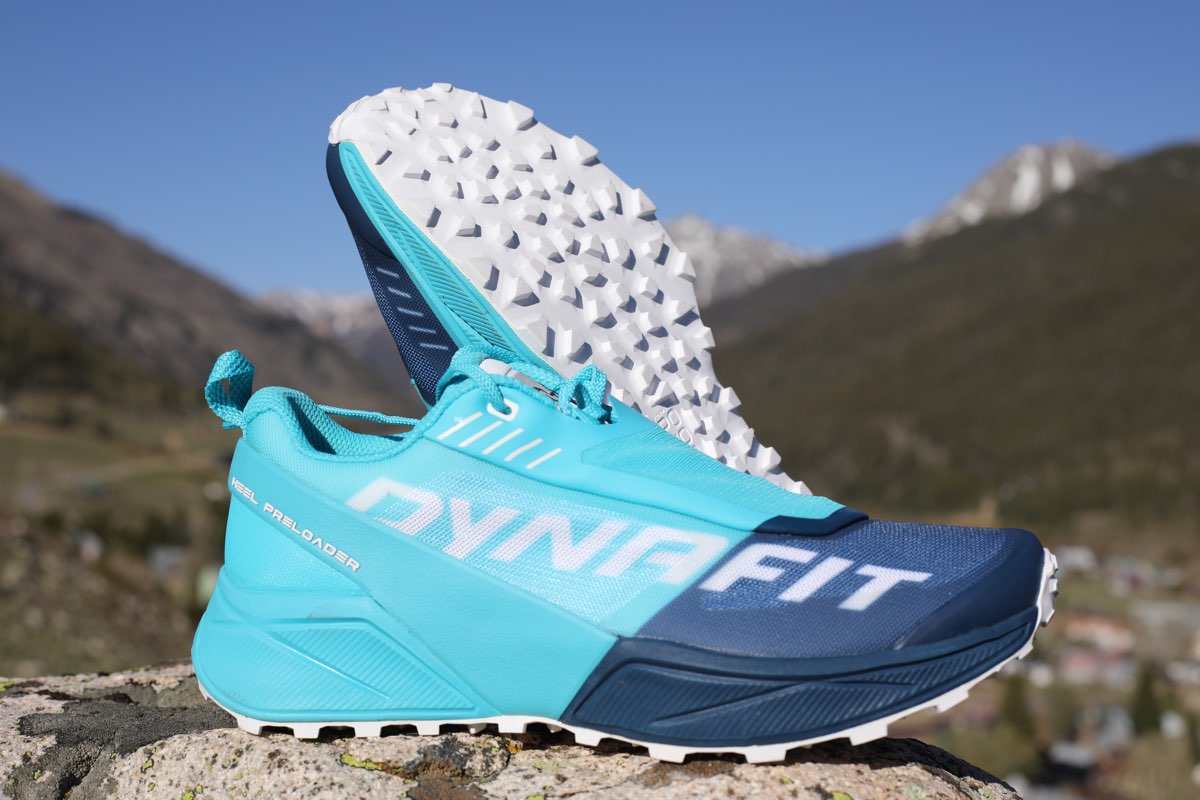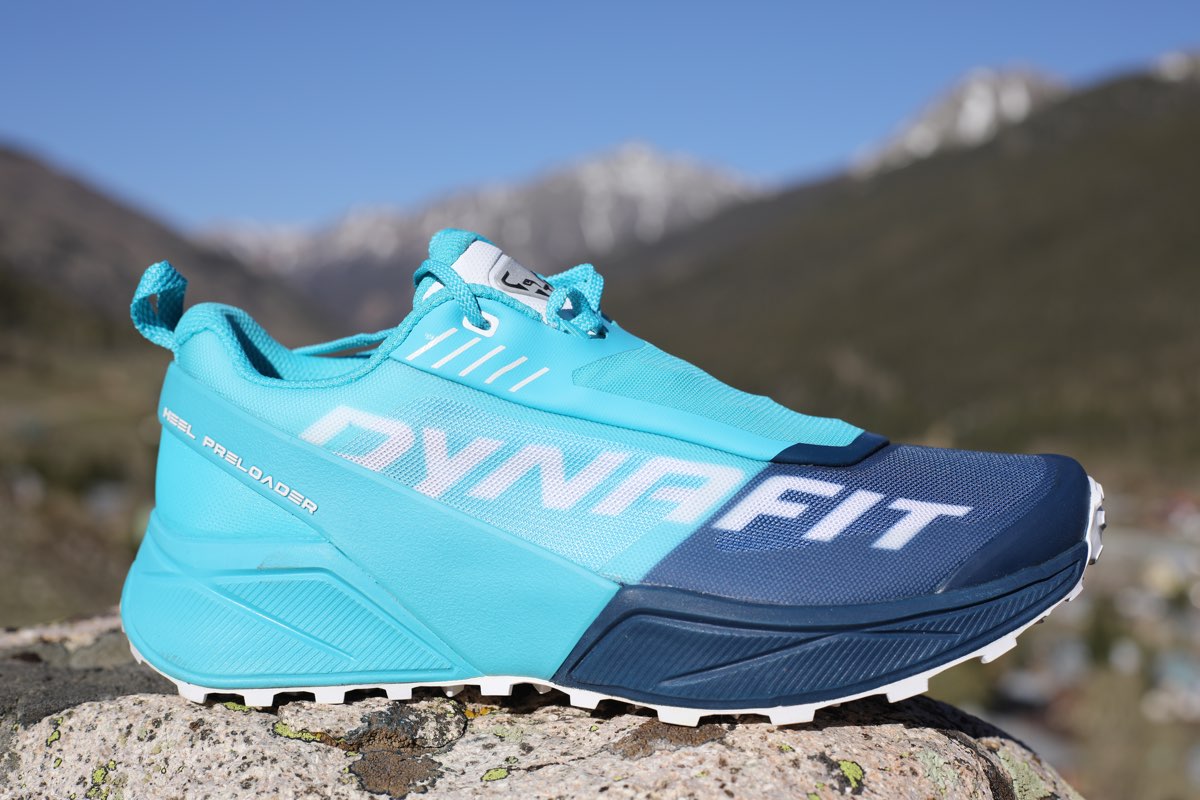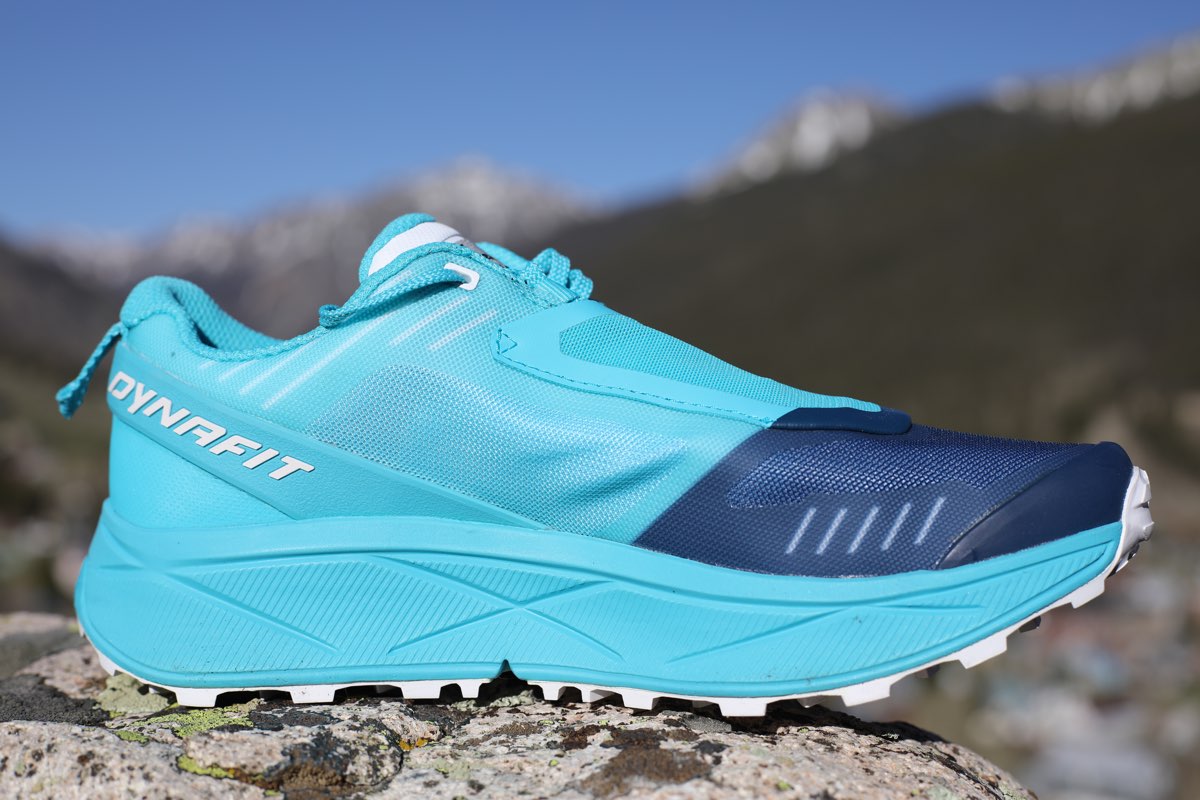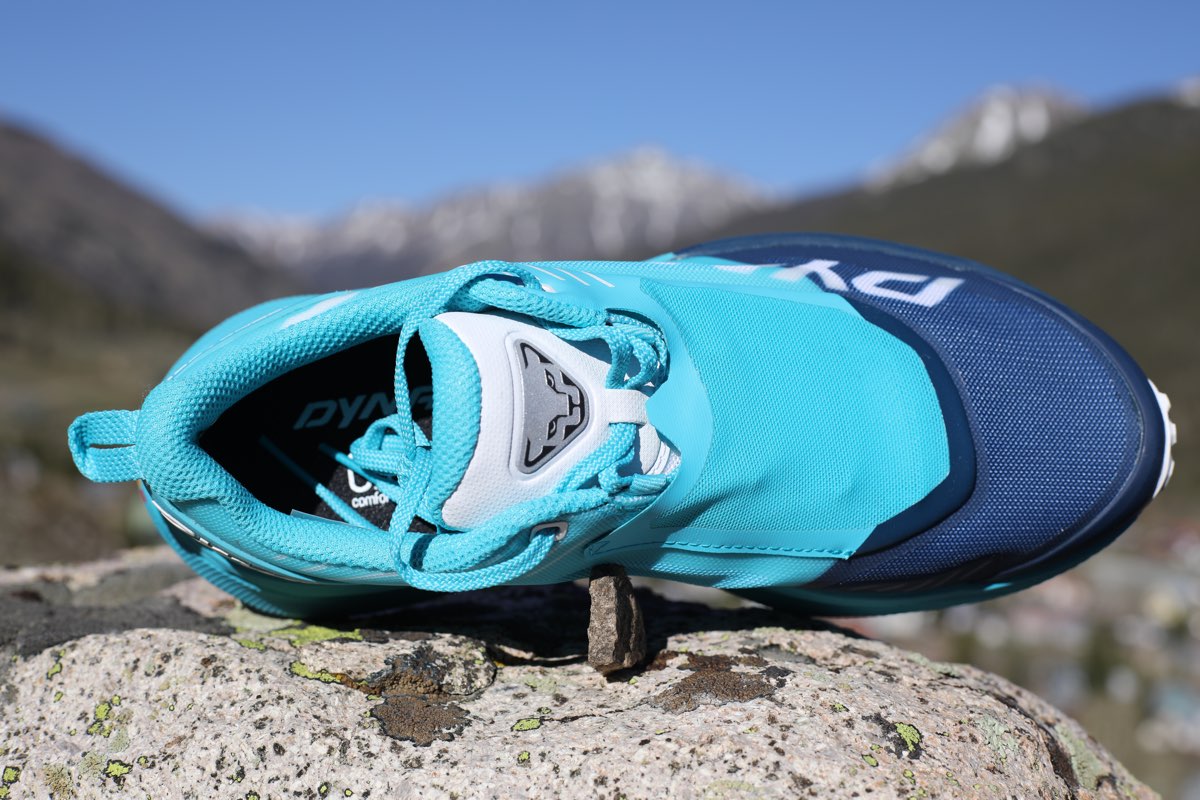The Dynafit Ultra 100 ($140) represents a fresh new direction for Dynafit trail running shoes. The Ultra 100 is both precise and highly protective, making you feel at home when going long distances or on shorter, technical mountain outings.
But let’s back up. Whether because of poor distribution or a lack of brand recognition, Dynafit running shoes didn’t previously stand out anywhere except in the most core mountain towns, and particularly in ski shops that flip their winter inventory in the summer months. Another take more simply put is that in the past they’ve not been enjoyable to run in. This has been the case for me.
Previously, I feel that Dynafit has struggled to offer a shoe that you can run in every day, at times borrowing too many of the wrong features–such as bulky upper material–from its sister brand Salewa and at other times overemphasizing European-fantasyland ridge running with way too much ground feel and not enough support for longer distances. All this to say that I was skeptical going into my testing of the Ultra 100s.
Now, with over 300 miles run in my pair, I’m pleased to share that this shoe is the cream of the crop! It is a robust shoe without the bulk you get in a traditionally cushier option. I’ve found it to be supportive but very agile. The shoe actually rocks your foot forward which helps a heel striker like me have a more smooth stride–more on this in the midsole section below. Dynafit states the shoe weighs in at 330 grams/11.6 ounces for men and 290 grams/10.2 ounces for women.
Shop the Men's Dynafit Ultra 100Shop the Women's Dynafit Ultra 100
Dynafit Ultra 100 Upper
With wide, U.S. size 13 feet and painful bunions, I often need to tweak the lacing pattern on my shoes by only lacing every other eyelet, especially in the forefoot. When these shoes arrived, I grimaced because accessing all but the very two highest lacing eyelets is difficult as they are obstructed by the mesh that makes up the robust lace garage. At a glance, the shoes look a standard width if not a bit narrow, so I worried they would be immediately painful for a wide-footed runner like myself. And although accessing the forefoot laces is still very difficult and rethreading all but impossible, the shoe’s upper material allows much more stretch than meets the eye and my worry vanished as soon as I slipped my feet inside. The shoe gives the right amount of stretch and accommodates my wide feet quite well. And if you really work the laces under the mesh covering, you can indeed loosen the laces a lot. For the shoe hackers among us, you could use an X-Acto knife to neatly cut out the mesh altogether, giving full access to the laces and eyelets. When the laces are tucked in, the shoe cuts an almost aerodynamic profile. Shoelaces as a feature are pretty unexciting, but Dynafit should be praised for the laces used, which draw very tightly and snugly.
The Ultra 100 has a mesh panel on the inside, outside, and forefoot with a screen-printed Dynafit logo across the lateral panel. The mesh itself doesn’t offer exceptional venting or breathability and it seems the emphasis is more on robustness, a good characteristic for an ultramarathon-distance shoe. It stretches four ways and hasn’t ripped at all–which is uncommon for me given the aforementioned bunions–nor has the stitching that attaches the mesh to the upper.
I shouldn’t make a comparison with another shoe that might rival this one in terms of its anonymity amongst runners, but I am reminded of the VJ MAXx, a shoe with a lot of the same characteristics as this one–same drop, similar breathability, and similarly adept grip and outsole feel–designed for longer and varied surfaces. It differs though in its upper; I loved the grip and outsole of the MaxX but found its upper to be very rigid and its wrap around my foot way too constrictive. Again, it might be my wider-than-average feet but the MAXx’s upper misses the mark and reinforces my appreciation of the Ultra 100 uppers.
Dynafit Ultra 100 Midsole
Compared to previous Dynafit midsoles, such as the Feline which was unforgiving and emphasized ground feel above everything, the Ultra 100 confirms Dynafit’s intention in making a purpose-driven shoe for runners who don’t just prance over alpine ridges.
The Ultra 100 has a 6mm drop with what they call Heel Proloader technology. It’s said to provide comfort and security for the ankle, smoothing the ride. While the latter is certainly true–I actually think this shoe has improved my stride–my oft-rolled and oft-sprained left ankle has never been more sore walking down the stairs in the morning than since running in this shoe full time. I think it boils down to proprioception; with its heavily cushioned landing and the 6mm between the heel and the ground, the shoe tends to disengage the foot and ankles. What this does over time is produce a cumulative pounding on the ankle. This is not a definitive assessment and please note my left ankle is susceptible due to so many injuries. Still, the ankle is more sore the next day in this shoe than in the Salomon Sense Pro 4 or New Balance Fresh Foam Hierro that I’ve also been testing.
Dynafit Ultra 100 Outsole
Pomoca is a name the ski mountaineers among us will be familiar with; their skins for climbing in skis are among the best and most widely used by skimo racers. The pop of color of the distinctive Pomoca label is printed on the heel, which from a branding perspective is useful if you come from the skimo world for the feeling of instant trust that it conveys. The outsole pattern is not too dissimilar from the Sense Pro; big and plentiful 2-centimeter lugs (even more than Salomon’s) line the outsole with a tread pattern resembling a beefy tire you might find on an all-terrain vehicle. The multidirectional pattern is “all over,” meaning it runs the entire length of the shoe sans a 3-centimeter rectangle where “Formula Pomoca” is stamped. Despite its visual complexity, the pattern doesn’t perform very distinctly–I think that’s the intention–because as the name suggests, this is an ultra shoe and not otherwise specific in its objectives.
I’ve run the shoe through Boulder, Colorado’s spring snow, mud, and dry trails, and it doesn’t objectively stand out in any of these conditions. It is predictable. And for a shoe meant for bigger days, there wasn’t a sacrifice in downhill performance. I compare this to a shoe I owned multiple pairs of and loved as well: the La Sportiva Akasha. The Akasha is a bit more cushy than the Ultra 100 but is comparatively adept at downhilling.
Dynafit Ultra 100 Overall Impressions
“Precision” is the word that I return to over and over when describing the Dynafit Ultra 100. There is no toe splay and the landing isn’t exceptionally cushy but despite missing some of these popular modern attributes, this is a shoe that lets you run fast without burning out. It is one in which you can live out your wildest ultra-distance objectives or even shred those mythical ridges. The shoe will go both ways because it is light enough, spry, and highly protective. I find it to be a refreshing new direction for Dynafit.
Read up on more new trail shoes for spring-summer 2020.
Shop the Men's Dynafit Ultra 100Shop the Women's Dynafit Ultra 100
Call for Comments
- Are you running in the Dynafit Ultra 100? If so, what do you think about it overall?
- What do you think about the Ultra 100 in comparison to past Dynafit models?
- If you’re running in this shoe, uses the comment section to share your thoughts on the performance of its specific features.
[Editor’s Note: If you’re affiliated (i.e., an employee, ambassador, etc.) with a brand, please share your relation in each of your comments on this article. Thanks!]
Our Favorite Trail Running Shoes
Check out our Best Trail Running Shoes article to learn about our current favorite trail running shoes!





